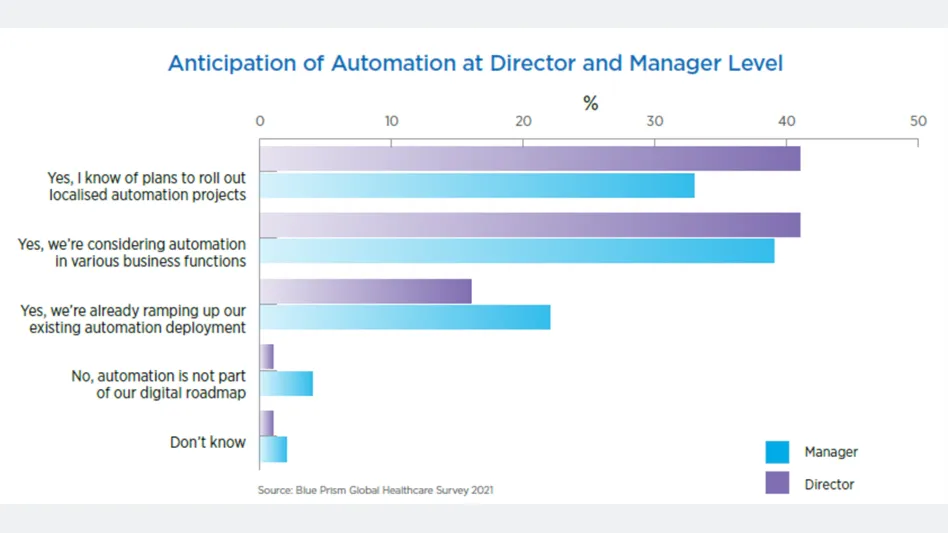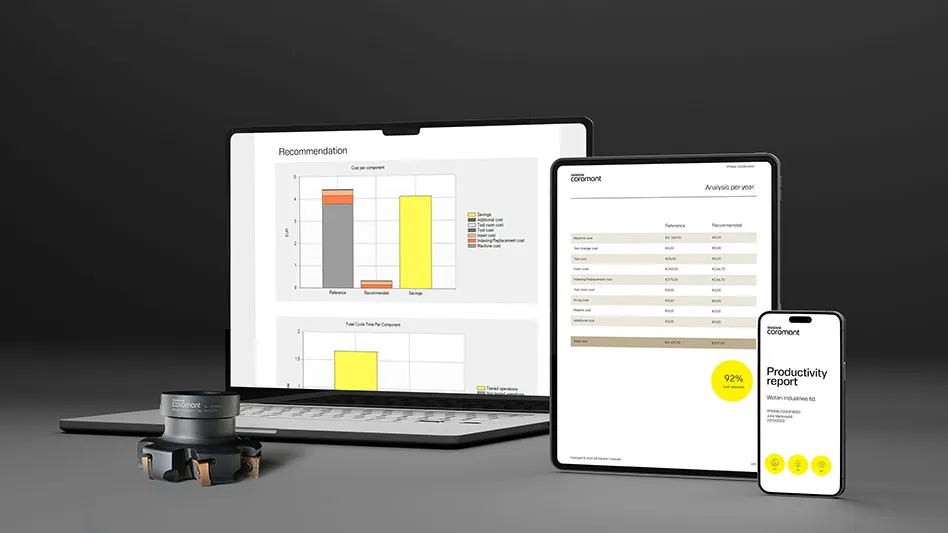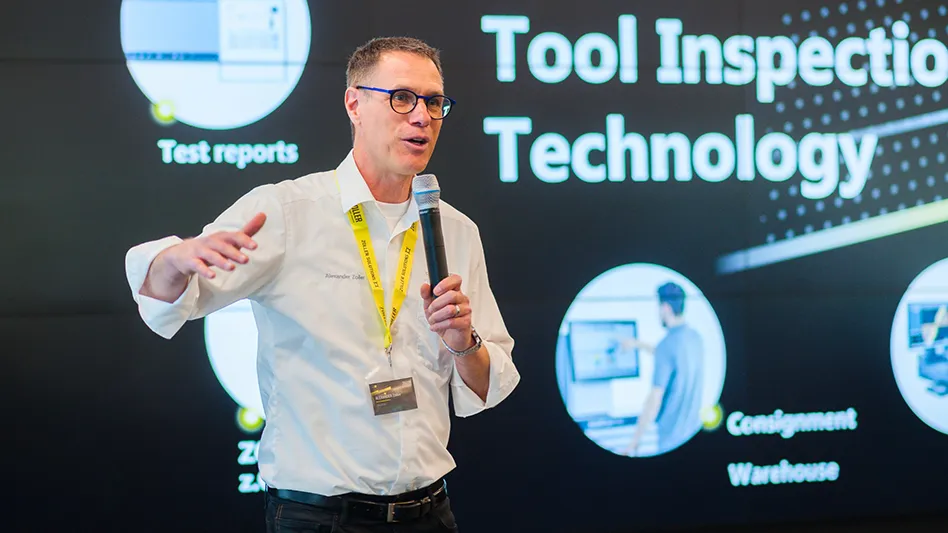
SS&C Blue Prism
In the aftermath of the pandemic, healthcare workers are still feeling overwhelmed in an age when healthcare organizations are facing demands to do more for their patients with the same or even less resources. Burnout among healthcare workers reached roughly 60% in 2021.
The pandemic took its toll on health systems around the world, leading to patient care and treatment being affected, with growing waitlists and waiting times, and overburdened care workers, struggling to fill the gaps in an already understaffed and under resourced sector.
In the World Health Organization’s (WHO) latest global pulse survey, 92% of the 129 respondent countries reported some kind of disruption to services.
How does a sector with significant backlogs, resource and talent shortages, and difficulty attracting and retaining new talent dig, itself out? The WHO’s Regional Director for Europe, Dr. Hans Henri P. Kluge, has said that in order to catch up on backlogged care we need to, among other things, invest in future health infrastructure.
Archaic data collection
In a Blue Prism Global Healthcare Survey Report, legacy systems and infrastructures were seen as the greatest barriers to achieving positive patient experiences. Such systems create information silos that obstruct healthcare workers’ ability to access information when they need it and to gain value-creating insights from free-moving data. This leads to more errors due to manual data transfer and inefficient operations.
Digital cures
The pandemic forced most healthcare organizations (93%) to accelerate digitalization plans. This left an indelible mark on the sector, with automation now a common feature of healthcare organizations’ strategy plans. Most healthcare organizations are either considering or already have plans to roll out automations, according to 70% of those at the director and manager levels.
An intelligent automation (IA) platform, employed effectively, can help cut backlogs, get patients the care they deserve, and enable staff from every department to be more productive by alleviating some of their workloads.
Cases can be worked through faster by prioritizing patient requests and processing queries that do not require manual input. Digital workers can attend to repetitive and error-prone tasks, allowing more cases to be processed as time is given back to health professionals.
Operations across organizations are enhanced as siloed operating systems that create double-work, inefficiencies, and broken patient journeys are replaced with integrated systems and processes designed to use the right resource for the right outcome.
Process intelligence, as part of an IA platform, highlights organizations’ pain points so they can be improved to create further efficiencies. It also identifies processes ripe for automation, delivering immediate value in the form of greater patient care, supported healthcare workers, increased productivity, and reduced operational costs. Errors are caught sooner, patient journeys are seamless and streamlined, bottlenecks are identified and addressed, revenue is boosted, turnaround times are faster, and patient no-shows and unnecessary appointments are reduced.
IA is just what the doctor ordered
With the help of intelligent automation, we have seen health organizations give their patients the care they deserve and protect their futures by creating built-in agility and better patient experiences, alleviating overworked healthcare staff, and giving time and money back to their organization.
For example, Ohio’s Hospice, looking to increase efficiency across its operations, improve services, and reduce costs – especially important as a non-profit organization, introduced a digital workforce and intelligent automation platform. Their results showed the promise of a healthcare organization supported by digital workers: 24,000 hours were given back to the business and rapid scale was accomplished, with six automated processes reaching value in less than a year, and – most importantly – digital-human collaboration led to improved service delivery.
At the height of the pandemic, Pennsylvania-based Highmark Health waived COVID-19-related fees for all members and manual labor processes hit an all-time high. Digital workers helped clear their backlog and processed over 200,000 claims in just five days. The digital workforce assisted in making sure 2.1 million patients' claims were paid.
Inadequately designed healthcare systems are one of the top causes preventing equitable health outcomes. These examples illustrate the potential of IA to get healthcare systems around the world back on track.
The pandemic has forced patients to postpone a wide range of services, including those for acute conditions, recommended cancer screenings, and routine check-ups. Left unattended, the long-term health effects caused by a lack of early intervention, insufficient chronic disease management, and undiagnosed conditions will be significant.
Hospitals and health systems that adopt a digital-first strategy that encompasses an IA platform, artificial intelligence, interoperable analytics, and other related advanced technologies will be driving towards the future of medicine. Patient care can be put back at the heart of healthcare by creating self-service opportunities and helping staff cope with mounting workloads amid insufficient resources. Underserved patients don’t have time to wait.
Latest from Today's Medical Developments
- UCIMU: Q1 2024, a downturn in the orders of machine tools
- #43 Manufacturing Matters - 2024 Spring Aerospace Industry Outlook with Richard Aboulafia
- Tsugami America’s Technical Center in Minnesota
- RobOps Copilot for AI-powered robot optimization
- US companies invest heavily in robots
- #34 Lunch + Learn Podcast - Cobots' potential to revolutionize aerospace manufacturing with Techman Robots
- Universal Robots announces seamless integration with Siemens PLCs
- This month's Manufacturing Lunch + Learn is May 16





